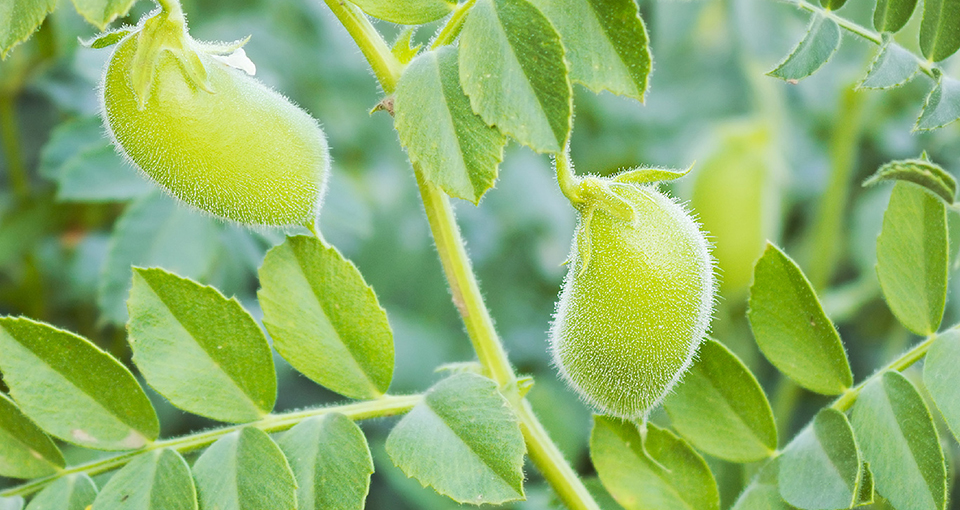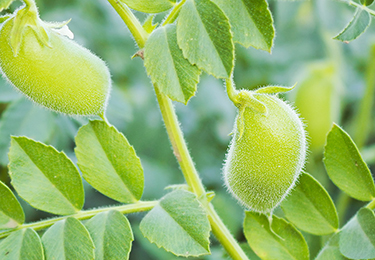
Watchlist
You can print out your watchlist and use it as a reminder for your purchase in the pharmacy.
Your watchlist currently contains no products.
Print


Venus chick peas
Venus chick peas
Botanik
There are different varieties among the chick peas (cicer) and one of these is the Venus chick pea. This is an annual, herby plant with a powerful taproot. Its four-edged stalk which stands upright grows 30 to 60 cm high and is more or less branched according to location. The unpaired pinnate leaves are coloured blue-green to grey-green and very feathery in the upper area. Moreover, the swollen pods on a bent stalk are characteristic and mostly contain two pyramid –shaped seeds.
mehr
Geschichte
The Venus chick pea has a very long tradition as a vegetable plant but in our area it has unfortunately become almost completely forgotten. It is assumed that the plant was cultivated approx. 8,000 years ago in the Near East. In the early Middle Ages Venus chick peas can be found in all plant books. Thus it is stated in the New Kreüterbuch (1543) by Leonart Fuchs that the plant when “boiled in water and drunk is good for the belly, drives the urine on, […] fosters menstruation and formation of milk […]“.
mehr
Inhaltsstoffe
Chickpea is rich in secondary plant substances, which have an oestrogenic or anti-oestregenic effect in the human body, depending on the body’s requirements. The effects of these are enhanced by the high amount of folate – various vitamin compounds with a folic acid character – found in chickpea. In our metabolism, they are primarily involved in processes of cell division and the formation of new cells, as well as blood formation. As a result, they can reduce the tiredness and exhaustion that occurs frequently during the menopause. This function also assists in tissue growth, which makes it an optimal supplement during pregnancy. Folic acid also supports the immune system and is important for mental stability. Folic acid also plays an important role in maintaining a normal homocysteine level. A too high concentration of homocysteine in the blood is a risk factor for arteriosclerosis.
mehr
Hinweise/Besonderheiten
The menopause yesterday and today
The “nightmare” menopause is felt to be a threat by many women. Unjustifiably – for this natural process is not an illness but a biologically sensible readjustment of the body to a new phase of life. During the menopause the body’s own oestrogen production is reduced and menstruation stops completely. Then the thyroid gland hormones T3 und T4 are increasingly produced and often cause restlessness, heat and feelings of fear. The ancient Greeks realised the connection between failing sexual functions and the thyroid gland but interpreted these mainly as a result of the womb ascending to the throat and becoming useless. Looked at from a background point of view, this anatomic positioning is, however, quite correct.
The menopause can be associated with a range of unpleasant symptoms, such as hot flushes, profuse sweating, irritability, anxiety or listlessness, depressive moods, insomnia or exhaustion, as well as weight gain, sexual problems and urinary, joint or muscle problems.
During the menopause our ancestors did the right thing intuitively and listened to what their bodies told them. Here – already caused by the natural loss of teeth – they ate more pulses, whilst in Asia soya products dominated the menu. Furthermore, our European ancestors prepared their meals with a lot of fat, such as goose-dripping, oil or butter. Meals should thus contain more complex carbohydrates, iron, fat and substances with a hormonal-like effect than meals during the previous stage of life. This gently compensates for the naturally changing hormone level during the menopause. Our great-grandmothers used to continue their work in the fields while changing their eating habits.
Through sunshine, a lot of movement in the fresh air and the increased consumption of fats they kept their bones stable and the ailments which are typical today did not occur.
Women in the menopause should know how to appreciate that pound or two more around the hips. For this natural regulation of the body does not occur without a reason: if the body’s own oestrogen production of the ovaries is reduced, the fatty tissue subsequently takes over an important function by transforming testosterone into oestrogen.
mehr
Produkte mit Venus chick peas
Venusurkicher® Granulat (Bio)
Venus Chick Peas Granulate, organic
